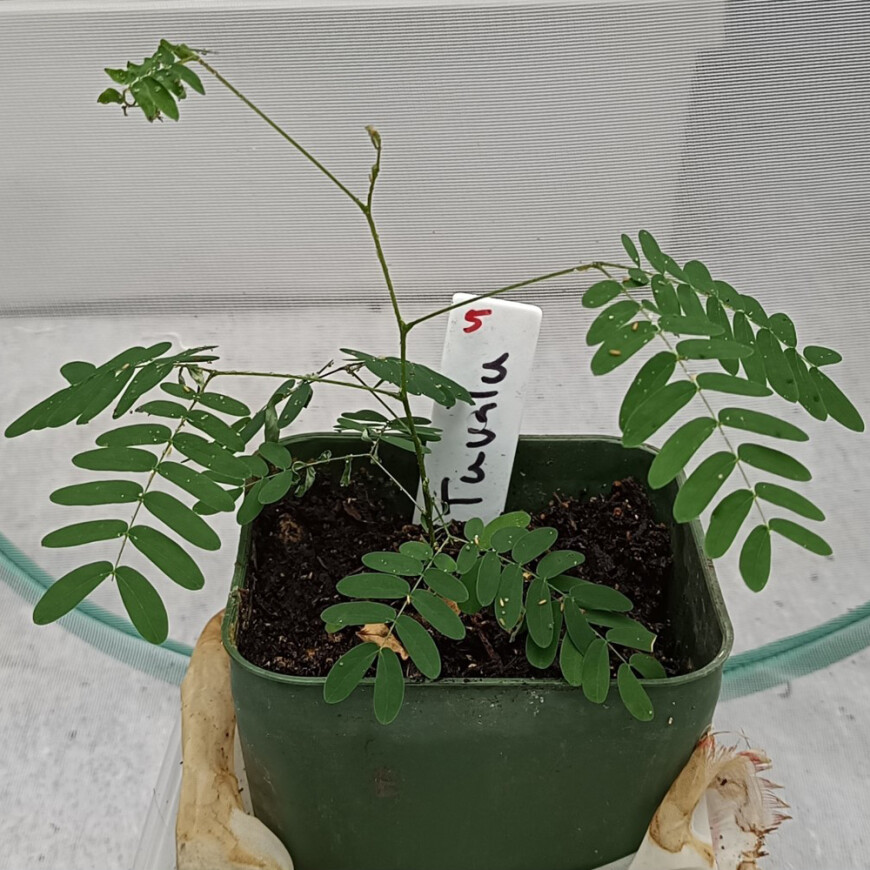Leucaena psyllid
How would I recognise a psyllid and what is its lifecycle?
The psyllids develop through five wingless immature stages (instars) before becoming winged adults. The early instar larvae are pale yellow while older larvae develop black markings on the abdomen and head. The juvenile life stages are collectively known as nymphs. The adults are tiny (1-2 mm long) so can be hard to see. They will jump or fly off when provoked.
Plants infested with psyllids look like breadcrumbs have been sprinkled on the leaves. This is due to a mixture of all the life stages, white skins shed during moulting, and honeydew droplets produced by the psyllids during feeding.
The eggs take around 2-5 days to hatch and the nymph stage lasts around 8 days. Females live for about a fortnight after reaching adulthood, with males a few days less. Each female can produce 300-500 eggs. The eggs will be hard to see as they are so small (0.3 mm long). But if you have a magnifying glass you may see small yellowish-white dots on the upper leaf surfaces and in unfurled leaves. Usually, 4-5 eggs are laid per leaflet but up to 16 eggs per leaflet can occur when population numbers are high.
How does it damage leucaena?
Both nymphs and adults feed on and damage the soft new growing tips. They insert their needle-like mouthparts into the leaf tissue and suck out the fluids which causes leaf shrivelling and defoliation. Nymphs initially feed together in the area where they hatch, later dispersing as they age.
How effective is it?
In a laboratory study the psyllids quickly destroyed the growing tips of small potted plants grown from seed sent from Tuvalu. Their impact post release in Tuvalu will be monitored.
In other countries with susceptible leucaena the psyllids can rapidly kill seedlings. Repeated attacks lead to defoliation and occasionally the death of large plants. Flowering may also be prevented. The impact of the psyllid can be particularly severe when conditions are dry.

Growing tips damaged by psyllid attack
How can I get the most out of they psyliids?
Given how readily the psyllids have dispersed to many places to date, it is likely that they will spread to other islands in Tuvalu. However, if this does not happen quickly and redistribution proves necessary, the psyllids could be shifted by collecting leaves infested with nymphs and tying them to the new growing tips of leucaena plants at new locations.
The natural enemies of leucaena in its native range have not been well-studied. A seed-feeding beetle (Acanthoscelides macrophthalmus) was released in South Africa but does not damage enough seeds to have a useful impact. A moth (possibly Labdia sp.) commonly destroys many seeds inside leucaena pods in the Pacific, but not enough to provide sufficient control.
Key contact


